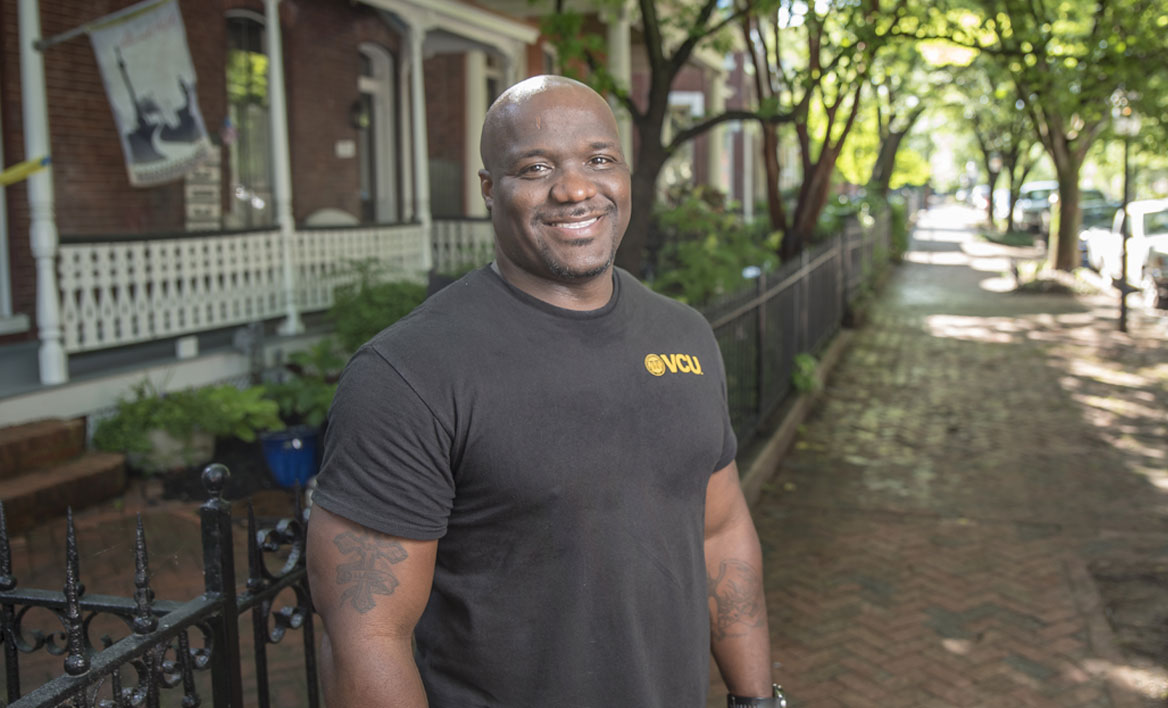Preventive measures
A multidisciplinary team of care providers draws on donor funds to reduce and prevent traumatic injuries in the Richmond community
By Brelyn Powell
Each spring at the annual Shining Knight Gala, the VCU Health community recognizes the first responders and trauma care providers who helped a specific trauma patient in their time of need. The evening’s honorees provided lifesaving care in a critical situation, but the beneficiaries of the event’s proceeds are the service providers who aim to keep such incidents from occurring at all.
Funds raised during the gala support a multidisciplinary coalition of VCU Health Trauma Center providers and pro-grams dedicated to reducing and preventing injury and violence throughout central Virginia. Among them, they lead eight initiatives under the umbrella of the VCU Health Trauma Center’s Injury and Violence Prevention Program. Each offers services designed to target common causes of traumatic injuries, such as youth violence, distracted driving, sexual and domestic violence or substance abuse.
Coordinators for each program are notified whenever a patient who qualifies for their services is admitted to the trauma center. After meeting with and assessing each patient, the coordinator encourages them to enroll in the program best suited to provide resources to educate and prevent re-injury. Enrollment is free thanks to grants, sponsors and contributions from donors such as those who attend the Shining Knight Gala.
“We rely on our donors to maintain these vital programs,” says Amy Vincent, assistant director of IVPP. “Their generous contributions support staff, provide assistance to patients in crisis and allow us to remain a sustainable program for the hospital and community at large.”
One program included in VCU Health’s IVPP is Bridging the Gap, which serves Richmond, Virginia-area youth who have been shot, stabbed or assaulted. Research shows that a significant number of youth hospitalized for an intentional injury continues on a trajectory that puts them at high risk for re-injury. Bridging the Gap aims to break that cycle by helping survivors of violent crime change their paths through hands-on case management and support services.
Bridging the Gap coordinator Ade Mason serves as a case manager and victim advocate. He works with individuals in the program to set personal goals and connects them with community resources that can help them find housing, enroll in education-al and vocational programs, identify positive social outlets and access mental health services. Each participant receives intensive case management services for one year before transitioning to an “after-care” phase, during which Mason checks in with them on a quarterly basis for an additional year.
Some patients are hesitant to enroll at first, but Mason often finds that it helps to assure prospective participants that assistance will be available free of charge.
“Being able to tell these young people that someone is willing to help them and resources are available at no cost – that’s a tremendous pitch to get someone to enroll,” Mason says. “I do what I can to let them know that I’m invested in their well-being and willing to do whatever it takes to help them.”
A little effort on his part to get to know each patient goes a long way, too, Mason says, and he makes a concerted effort to become a familiar face. He recalls daily visits with a young patient who was admitted to the VCU Trauma Center after being shot in the leg. Their conversations were casual at first, but after a couple of visits, Mason urged him to enroll in Bridging the Gap.
“I could tell he wasn’t ready to open up yet, but I still explained to him that his odds of being injured this way again were high unless things changed,” Mason says. “He was combative while we talked about it, but I didn’t want to give up on him. I visited with him every day until he was discharged.”
Less than a year later, the patient was back with additional gun-shot wounds. This time, he was ready to make a change.
“Because I spent so much time trying to get to know him, he remembered me,” Mason says. “He was paying attention to the things I said to him even when he was fighting back and I was sure he wasn’t hearing me.”
After the patient was discharged from the trauma center, Bridging the Gap helped him find employment and begin earning a GED diploma. He has since stayed on track with his goals and has avoided re-injury, Mason says.
Part of what makes Bridging the Gap effective, Mason says, is the program’s holistic approach. Mason is frequently out in the community, in participants’ homes or wherever they feel comfort-able meeting him to talk. He mediates to repair bonds between Bridging the Gap participants and their families and provides referrals to counselors and other services as needed.
“You can’t just help the patient and then send him or her back into the same adverse environments that they came from,” he says. “It’s important to go into those environments and help everyone within the household.”
The Shining Knight Gala, now in its 10th year, has raised more than $1.1 million to support IVPP initiatives. Mason is eager to put donors’ investments to good use.
“Our youth need programs like this, and our donors make it all possible,” he says. “As long as we have their support, I know our hard work can keep making a difference and, ultimately, make our city safer.”
To learn more about VCU Health’s Injury and Violence Prevention Program, contact Leslie Stewart, senior major gift officer, at (804) 828-3291 or leslie.stewart@vcuhealth.org, or visit vcuhealth.org/services/injury-and-violence-prevention.
